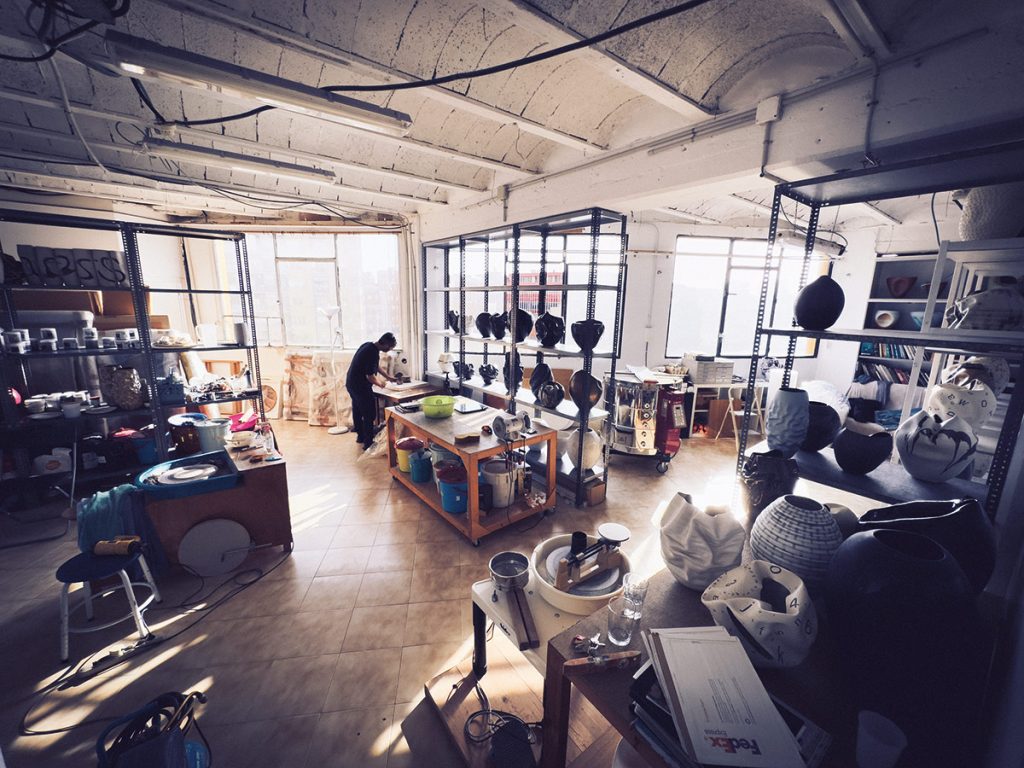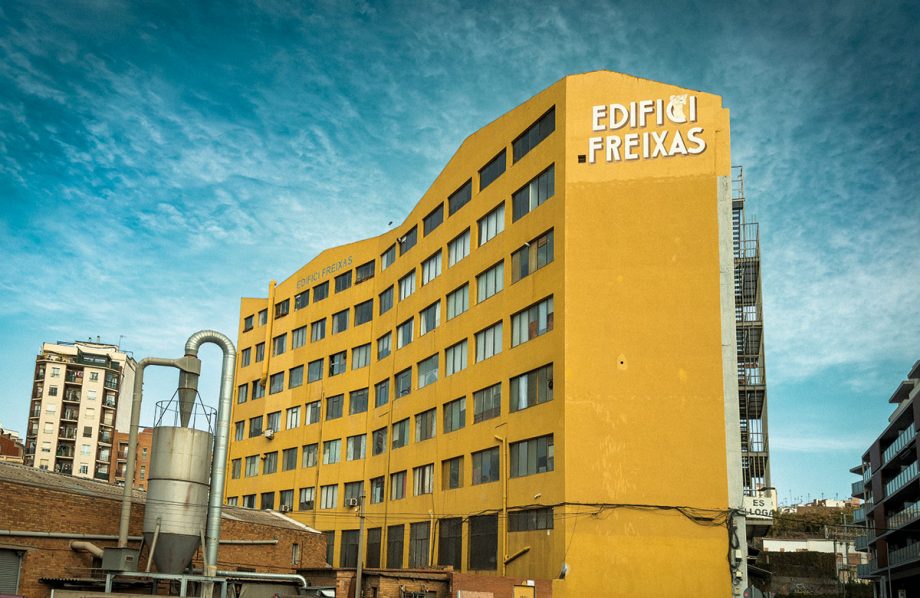NURSERY FOR ARTISTS
LOCATION HOSPITALET DE LLOBREGAT BARCELONA ADMINISTRATOR XAVIER PONS THANKS TO MARIA MARTIN AYALA ARCHITECTURAL PLANS BY ESCOLA TECNICA SUPERIOR D’ARQUITECTURA DE LA SALLE (ETSALS) SUSTAINABILITY UNIT (SUUN) RESPONSIBLE MIGUEL RODRÍGUEZ AND FERRAN GRAU ASSISTENT SANDRA FISCHER 2019-2020 STUDENTS JUDITH BERTOCCHI JORDI GELABERT VERONIKA MOTORINA HERNÁN CASTELU MIRIAM CURTO FEATURING MARCOS ROMERO WWW.MARCOSROMEROGALLARDO.COM ANDREA LERIA WWW.ANDREALERIA.COM PAOLA MASI WWW.PAOLAMASI.COM FRANCESCA D’ALFONSO WWW.FRANCESCADALFONSO.COM MIREIA CIFUENTES WWW.MIREIACIFUENTES.COM NEVENKA PAVIC WWW.NEVENKART.COM NICHOLAS ARROYAVE-PORTELA WWW.NICHOLASARROYAVEPORTELA.COM GERMÁN CONSETTI WWW.GERMANCONSETTI.COM MARC SPARFEL WWW.MARCSPARFEL.COM STARRING EDIFICI FREIXAS WWW.EDIFICIFREIXAS.COM
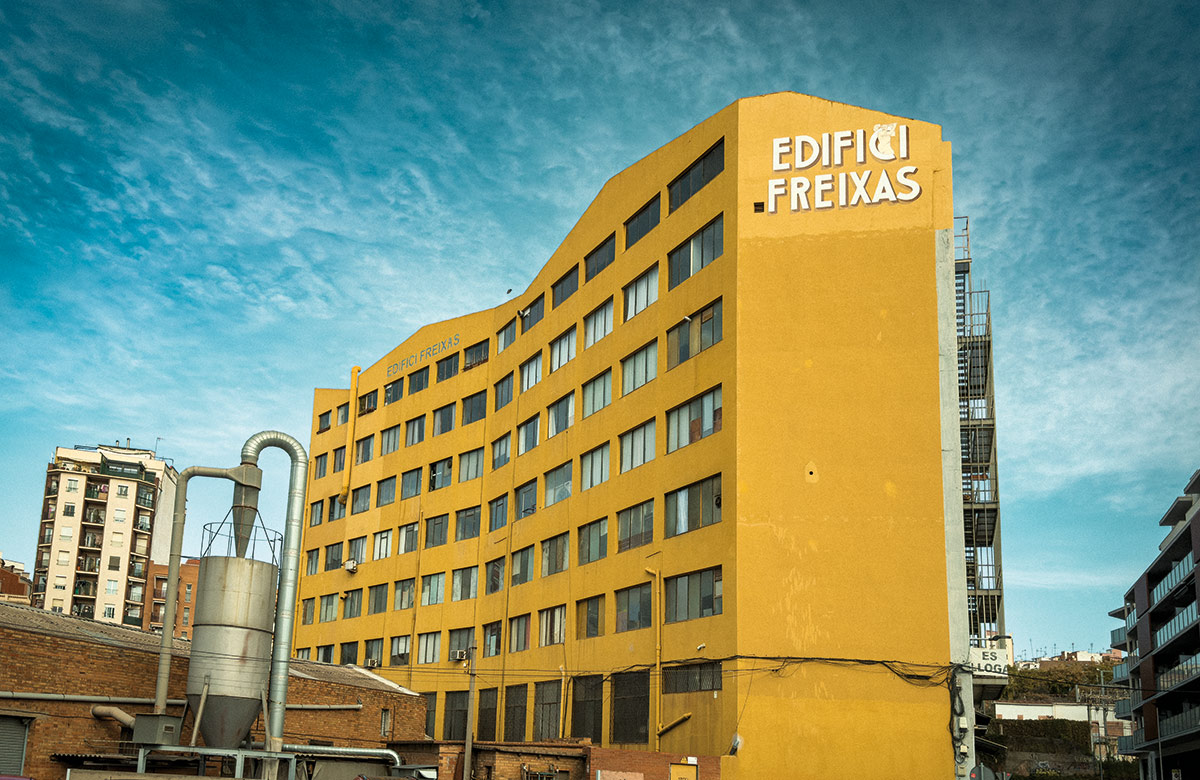
The empty and undivided spaces of old industrial buildings on the outskirts of large cities are the ideal place for artists to find a cheap space with a creative atmosphere that inspires their work. Spaces worn down by the tireless toil of their industrial past later give way to a different workforce, more open to the sensibility and imagination of the artists who occupy them and appreciate the historical and architectural heritage of the place.
Artistic communities are often created around these places, where artists can collaborate with each other, share resources, knowledge and weave broad networks for the dissemination of their work. The Edifici Freixas in Hospitalet de Llobregat, a city adjacent to Barcelona, is one of the most characteristic buildings in the area, notable for its recognisable facade painted in Naples Yellow.
In a catalogue that a nearby foundation and the city council itself created for a group exhibition of artists in the building, curator and art critic Albert Mercadé wrote a piece about the building, subtitling it “the Freixas factory, a nursery for artists”, where he commented on the importance of transforming obsolete factory spaces into new areas of production, and the diffusion of local artistic talent as a key element for the evolution of the city, which at that time wanted to be a pole of creativity and innovation, taking advantage of the proximity of a famous world congress of telephony and technology held annually very close to the building.
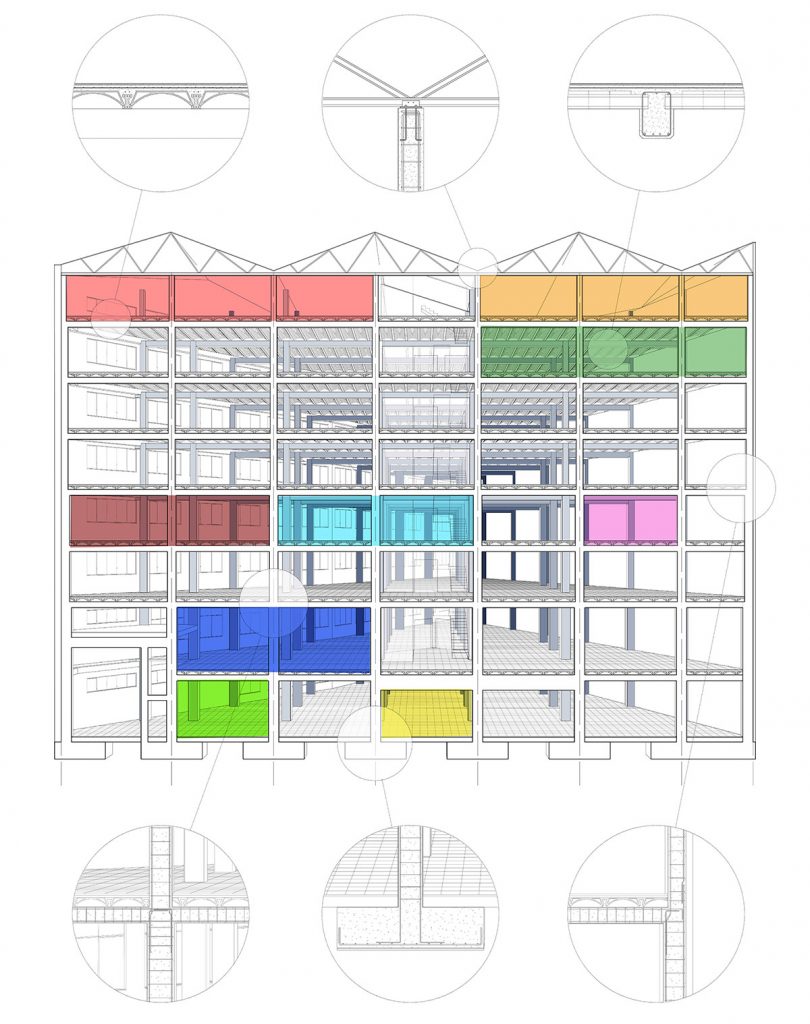
The truth is that the phrase “nursery for artists”, referring to the building, was very accurate, and I thought it would be interesting to talk a little bit about the history of this unique building, showing some of the artists’ studios and illustrating the place as a real nursery, through architectural plans, orientation studies and the use of natural light (so necessary for growth in any traditional nursery).
Xavier Pons, the building’s administrator, told us that the land of the building belonged to a family from the Sants neighbourhood in Barcelona known as Cal Freixas. At the end of the 19th century, the family moved from the Sants neighbourhood to the other side of the Riera to settle there in a new house and work the land, including the area where the building now stands. They worked with vineyards on this land. In the middle of the 20th century, the area was urbanised with the creation of several streets and was developed by the municipality as an industrial zone. The Cal Freixas family decided to invest in the construction of an industrial building, a project they started in 1963, with construction of the building being completed in 1966.
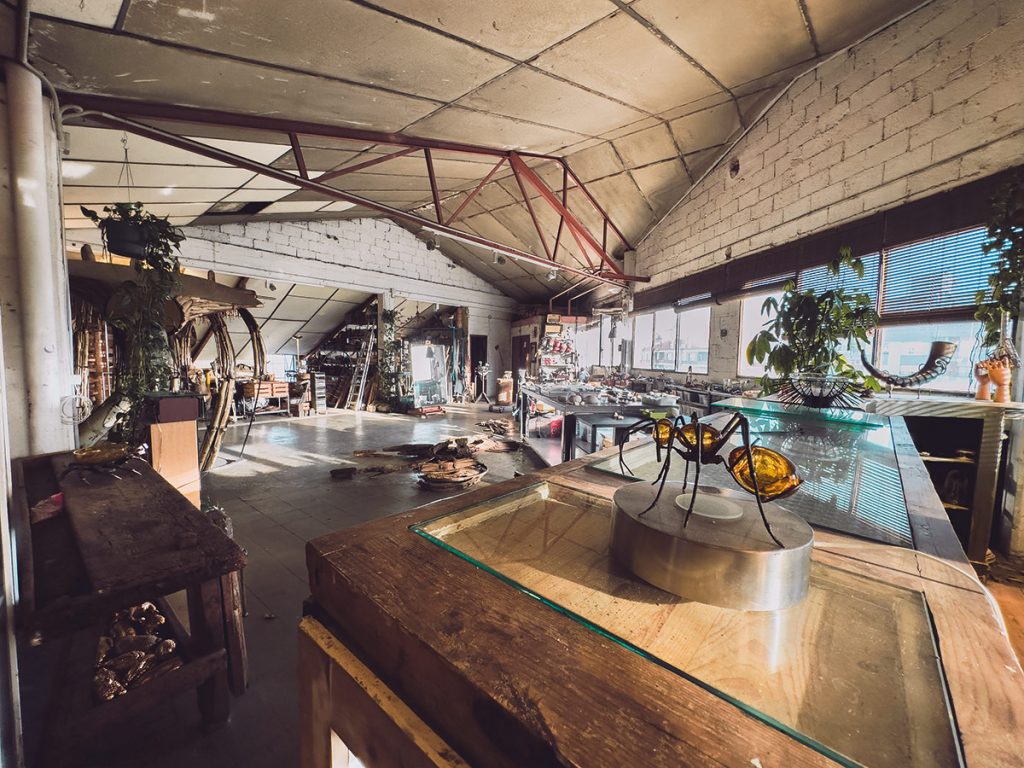
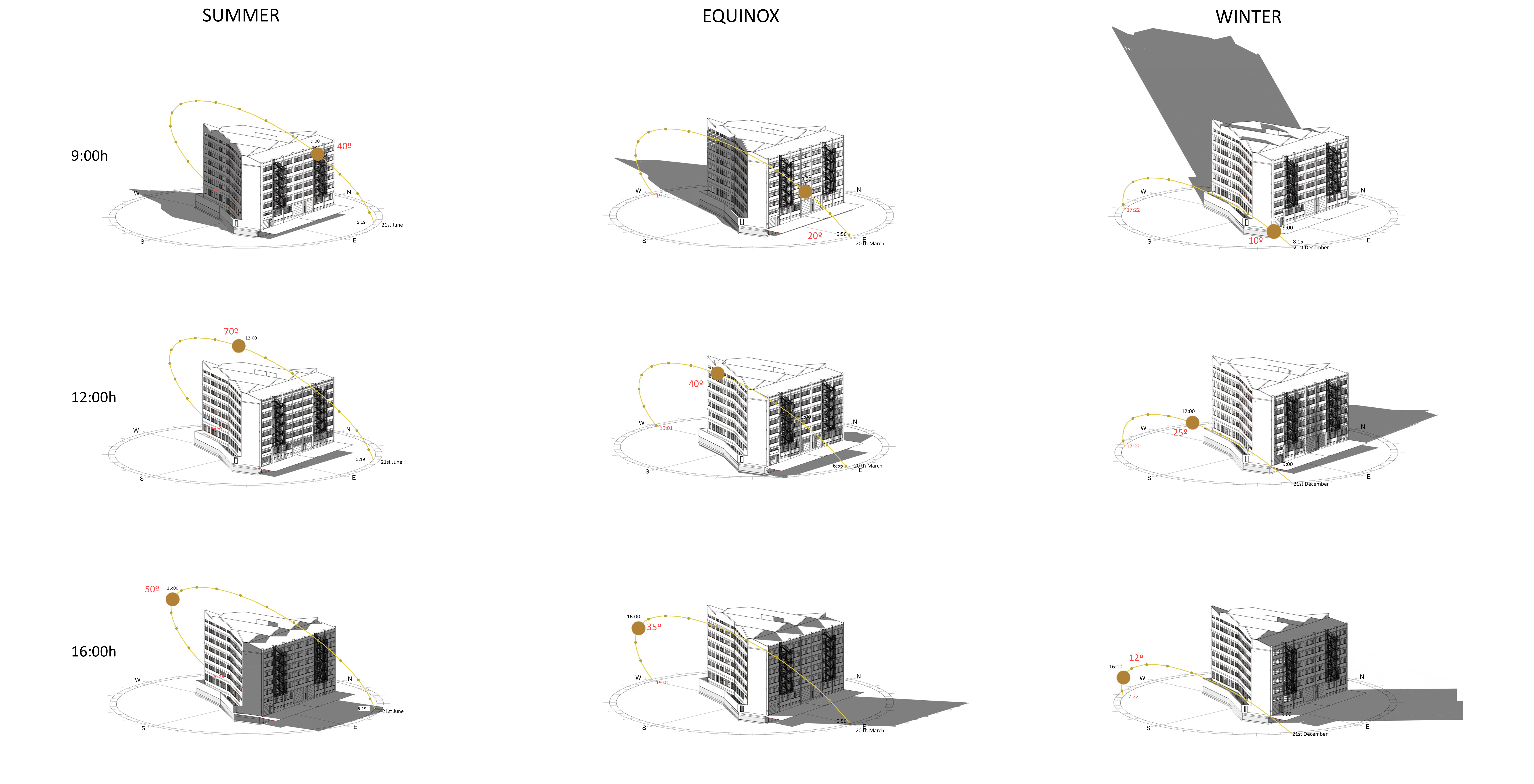
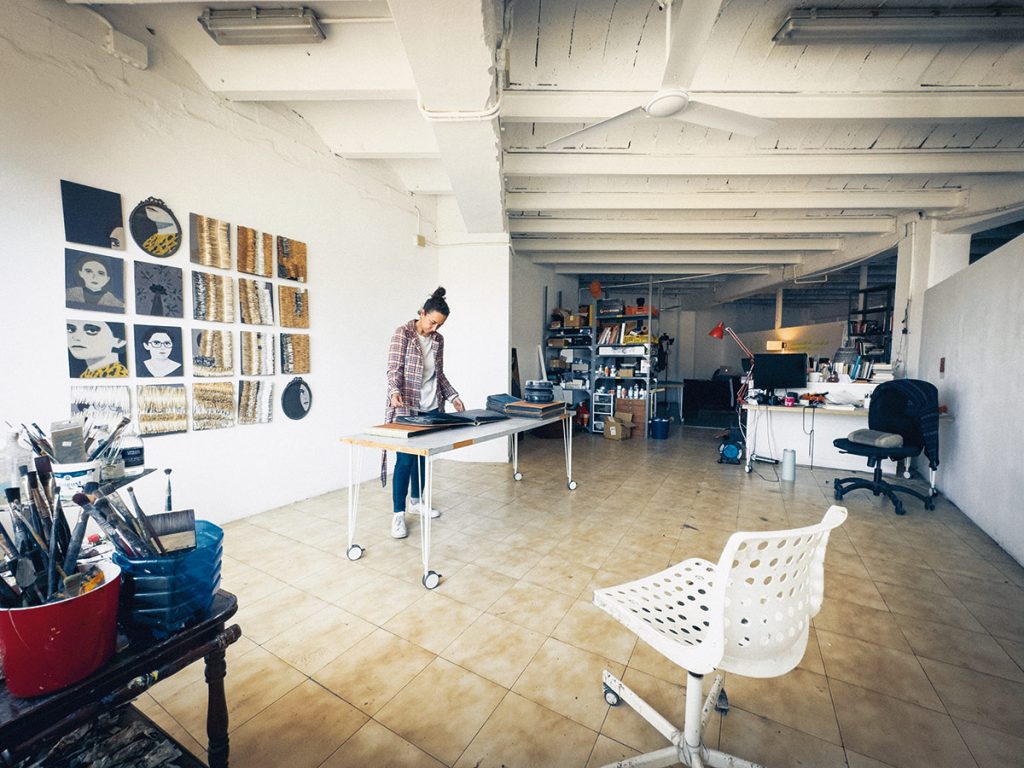
A Dutch company called Fábrica de Lámparas Industriales Z, a subsidiary of the well-known Philips, was the first tenant of the building. They rented the building in its entirety as a warehouse for their lamps for the Spanish market until 1968, when they moved to another location and left the building empty. After some time without finding another tenant, the decision was taken to divide the building into premises for small entrepreneurs who wanted to set up independent industrial workshops. It was a time of great industrial growth in Catalonia and there was a lot of demand from entrepreneurs who needed space to work in sectors such as textiles, plastics, chemicals, etc., so they turned the building into a kind of business incubator, where some companies grew a lot and had to move to larger spaces and others settled permanently in the building for years.
The exclusively industrial occupation of the building lasted until 1998, when María Martin Ayala appeared, a plastic painter who had been living in Berlin for several years, where she experienced the fall of the Wall and enjoyed the freedoms and aid that Spain did not offer to artists like her at the time. In Berlin, Maria lived through the characteristic movement of the 90s where artists occupied abandoned industrial buildings or buildings in the process of demolition.
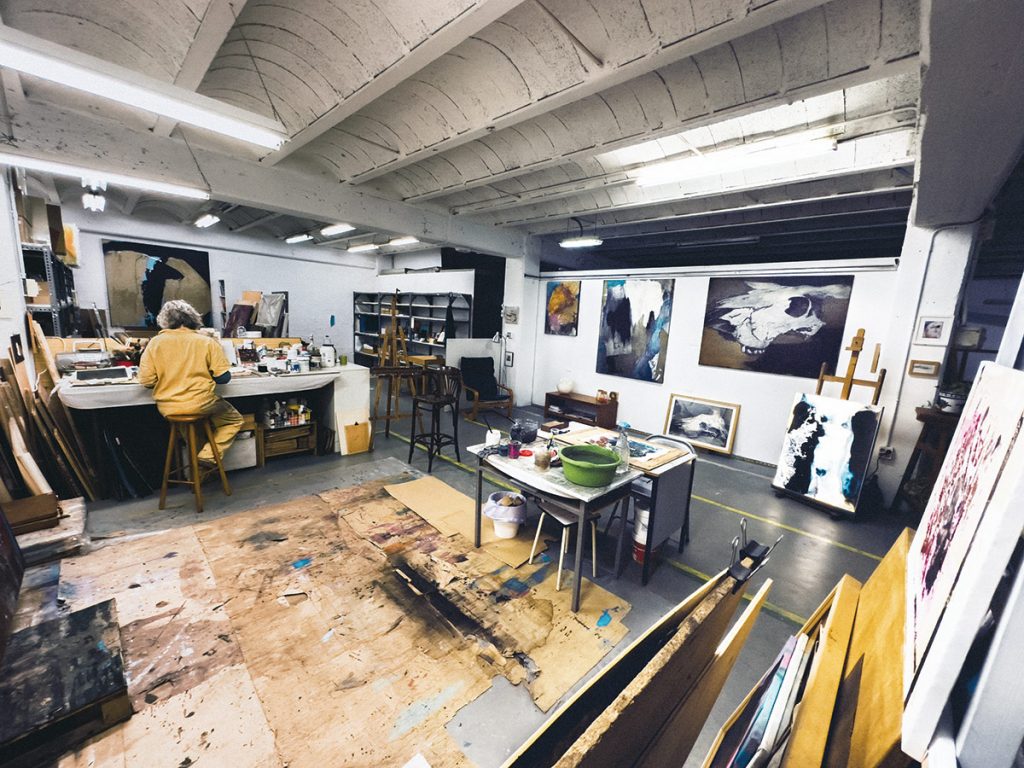
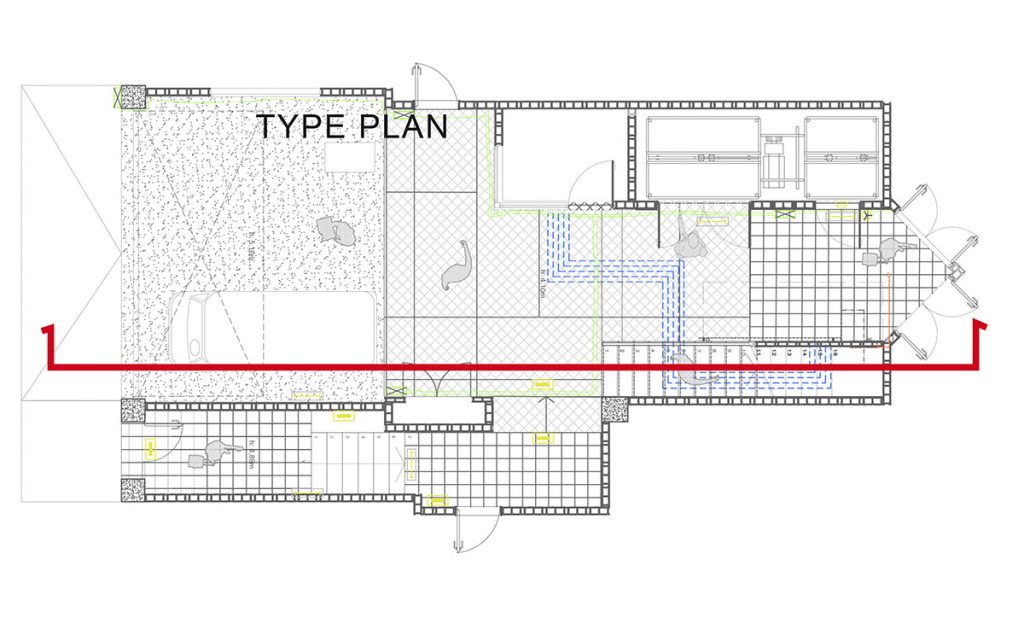
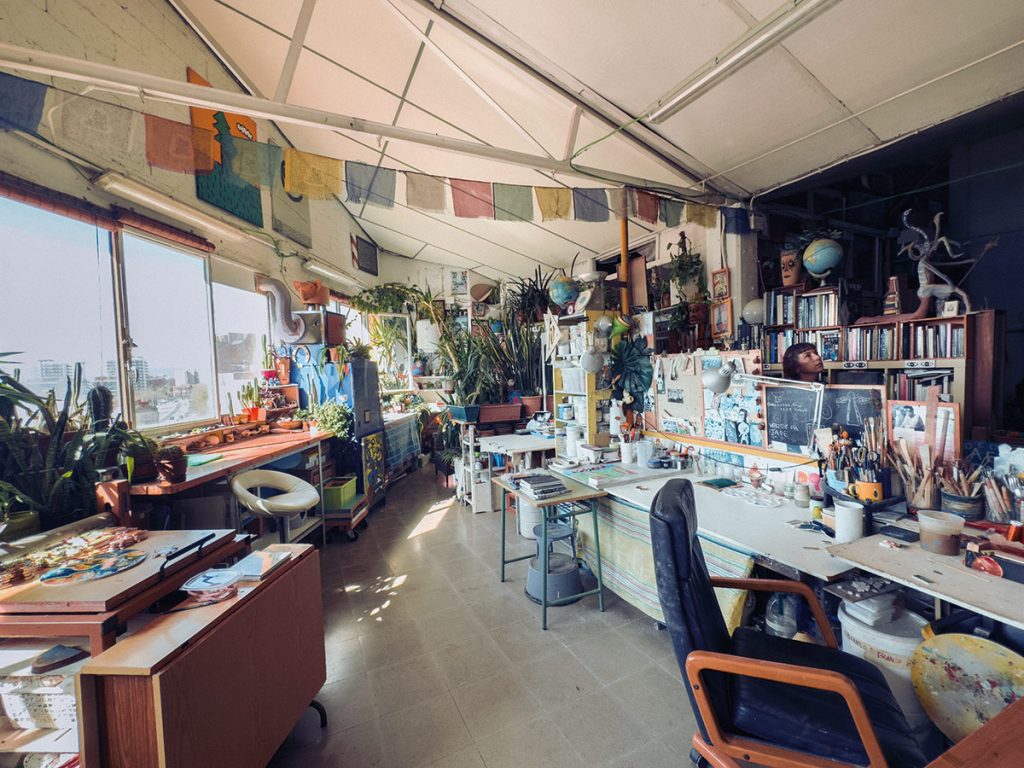
She herself lived and worked in Bulowstarsse, an occupied artists’ house, known as the famous “Kunsthaus Tacheles”, a place that became a historical cultural centre. In its most active phase, the K.Tacheles housed around 80 artists’ studios, sales rooms for contemporary art and crafts, rehearsal rooms for musicians, several exhibition halls, as well as an independent cinema. The open space in the building’s inner courtyard was used, among other things, for outdoor exhibitions and housed large-format sculptures and installations. The K.Tacheles was an ideal location for a thriving cultural scene, offering far-reaching opportunities for artists from a wide range of fields and promoting diverse currents in the contemporary art scene.
At the end of the 90s, María Martin Ayala decided to return to Barcelona, where she had studied Fine Arts. Probably influenced by Berlin culture, she began to look for a unique space to set up her studio and workshop, which she would share with two friends, who also were artists, Fátima Tocornal and María Gibert. Shortly after, they met Xavier Pons and thus came across Edifici Freixas. They decided to move to the top floor of the building, attracted by its open spaces, great light, easy access for their large-format works and, of course, the reasonable rent at the time. Once set up there, Pons and Maria talked about the possibility of converting the empty and unrented spaces into studios for artists. And that is how the “artistic occupation” of Edifici Freixas began.
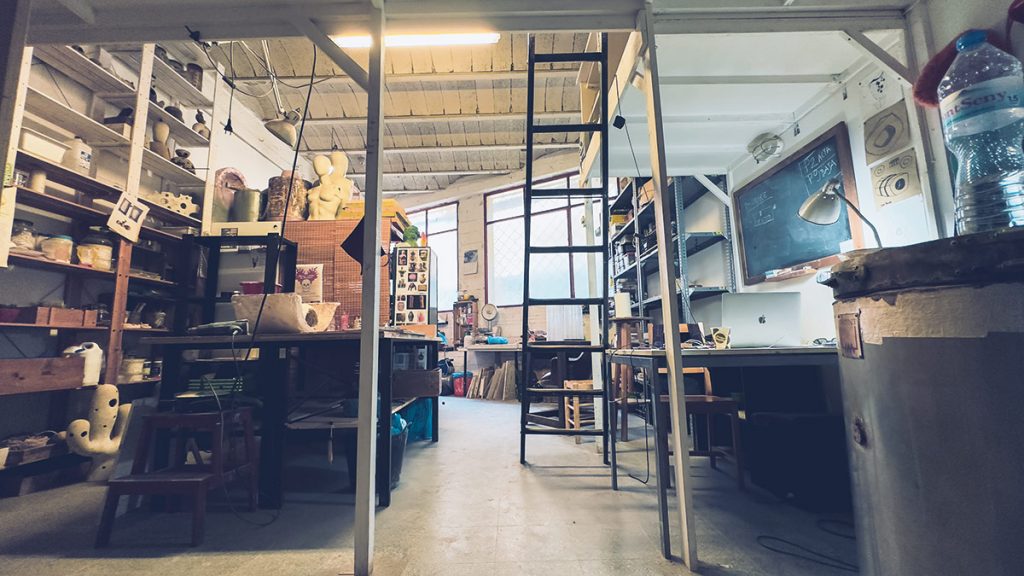
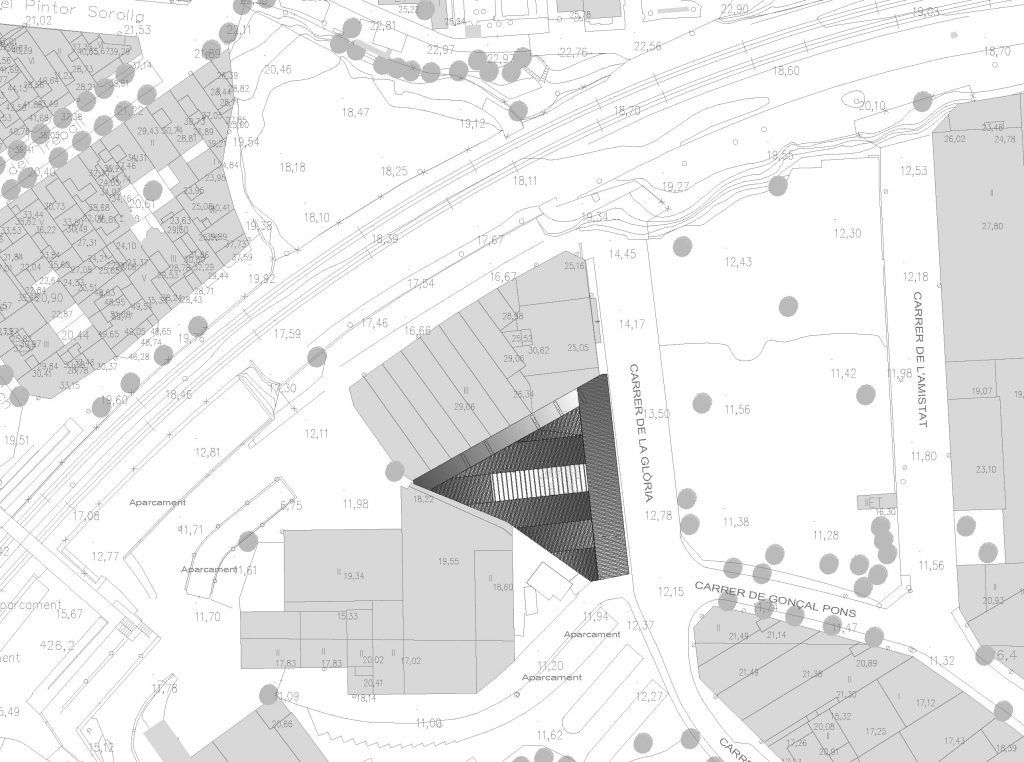
Another prominent figure in the growth of the “artistic occupation” of the building was the Chilean artist Nevenka Pavic, who, motivated by a change of scenery and the desire to travel to Europe, arrived in Barcelona in 2000. Visiting an old friend in the city, the Chilean artist Javier Tapia, who at the time was working in Martin’s studio, Pavic got to know the building, fell in love with the place and without hesitation decided to set up her studio and her new life in Barcelona.
Pavic still works in the building today and has been and continues to be a fundamental member of the artistic movement of the building and the city, as is the great sculptor Marcos Romero, who works in Martin’s old studio on the top floor of the building. German Consetti, Marc Sparfel and Francesca d’Alfonso are on the ground floor of the building, a place that always breathes art and good conversations, Mireia Cifuentes with her beautiful painting, the talented and renowned Nico Arroyave-Portela with his hypnotic works, Paola Masi with her delicate ceramic work and Andrea Leria with his brilliant biographical way of seeing the world, among many other artists create and continue to give life to the unique community of artists at Edifici Freixas. We invite you, if you have the opportunity, to discover the treasures hidden there.
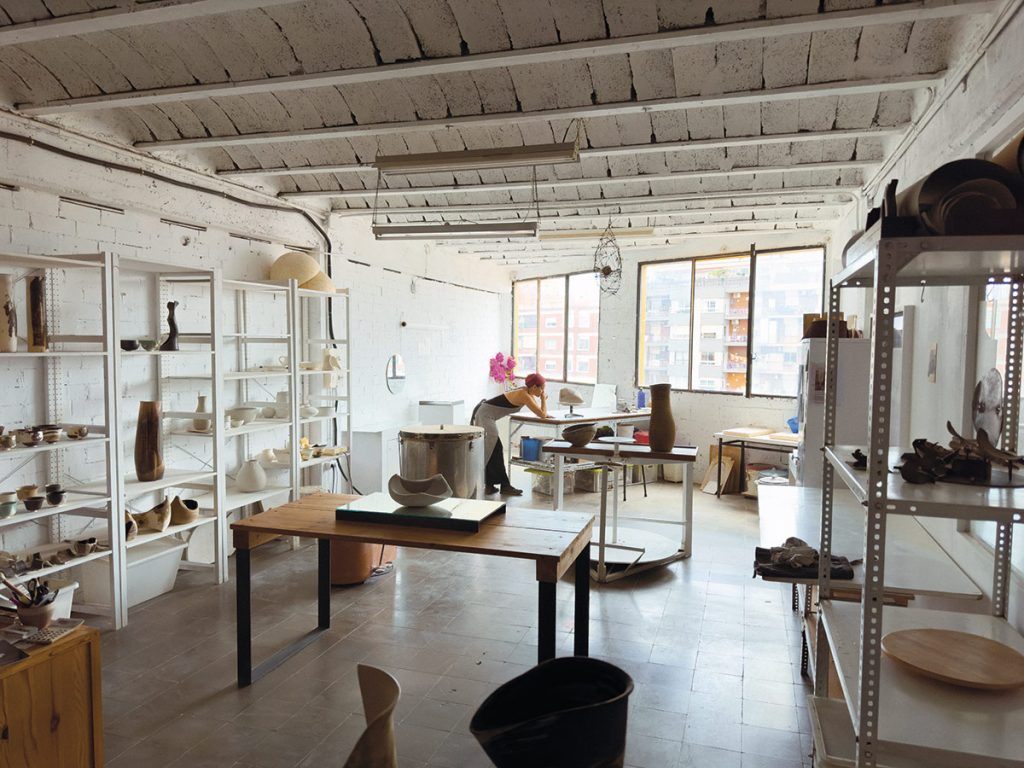
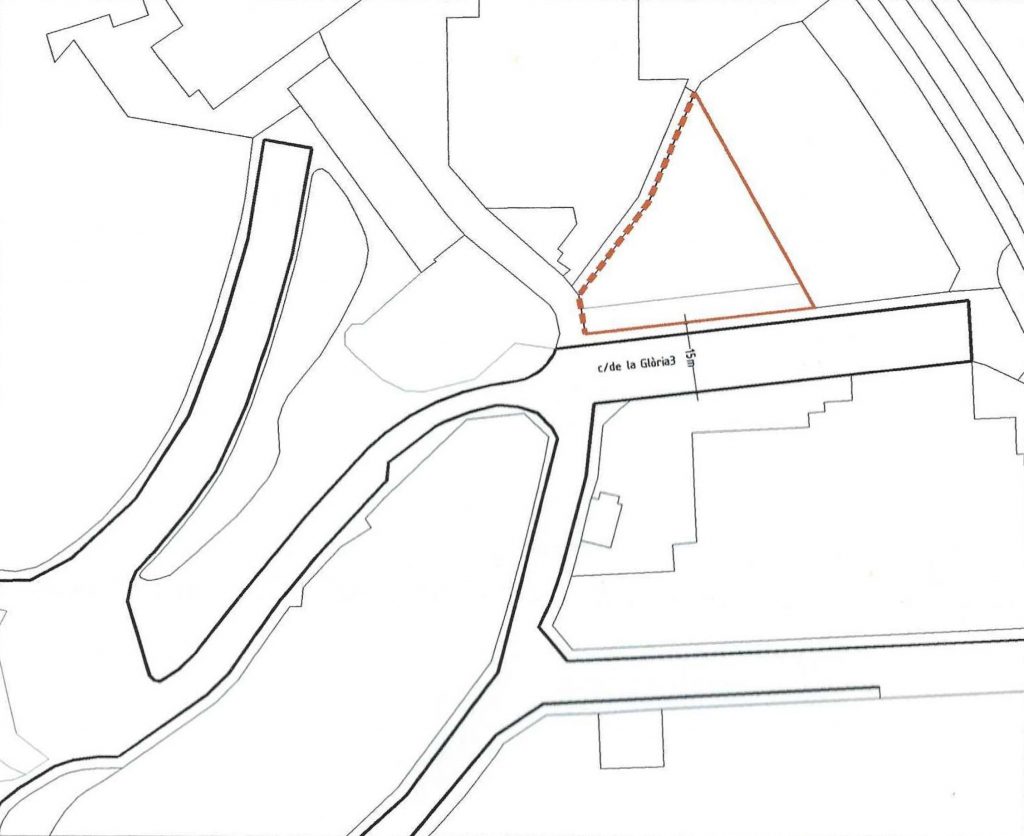

The passage of time and the needs of each moment are a reality that is difficult to deny: from the vineyards that were cultivated on the land, to the incubator of companies mentioned by Pons, and later the nursery for artists, as referred to by Mercadé. Time will tell what will happen next. Some people come and others go, like yours truly. Nobody knows what the future holds, but I have always liked to think that “memory makes immortality”, and like people, there are places that will never be forgotten.
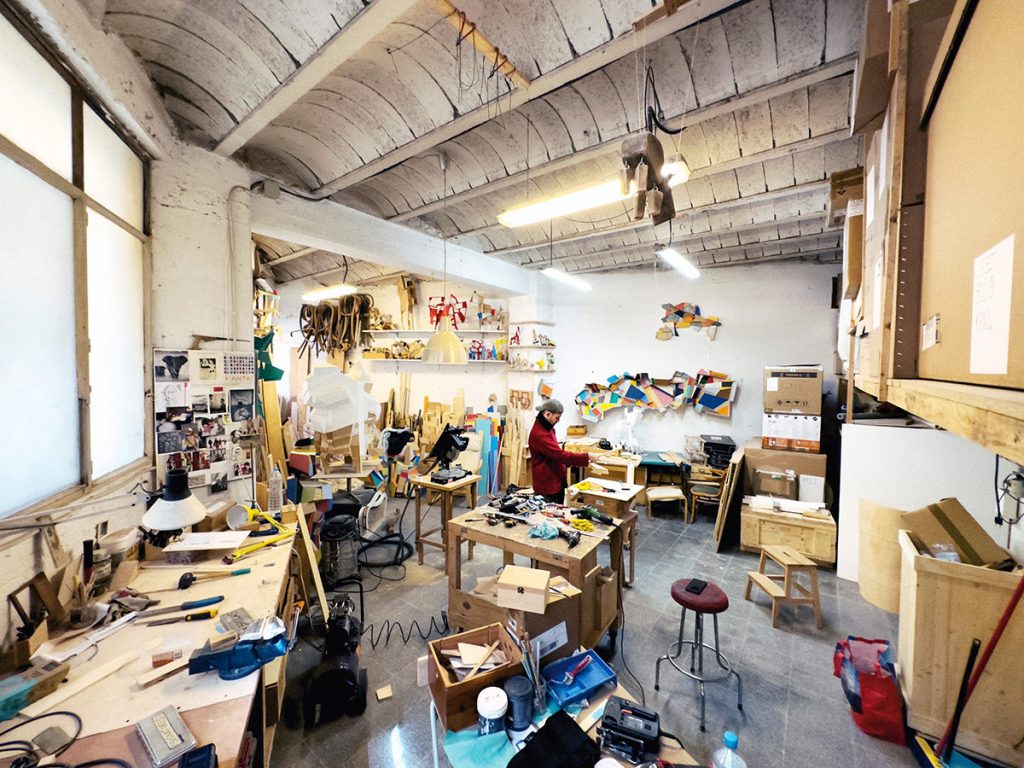
The passage of time and the needs of each moment are a reality that is difficult to deny: from the vineyards that were cultivated on the land, to the incubator of companies mentioned by Pons, and later the nursery for artists, as referred to by Mercadé. Time will tell what will happen next. Some people come and others go, like yours truly. Nobody knows what the future holds, but I have always liked to think that “memory makes immortality”, and like people, there are places that will never be forgotten.
